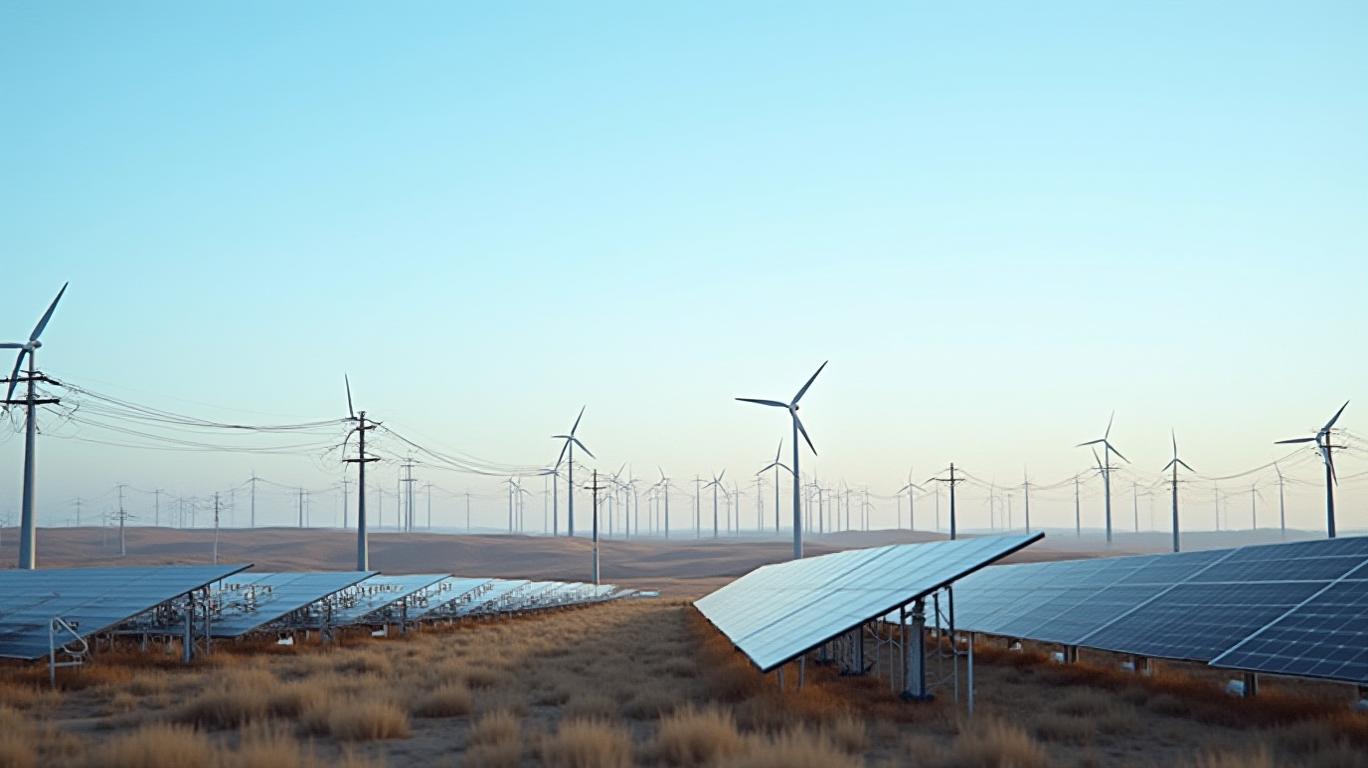EU Carbon Allowance 2 Futures: A New Frontier in Climate-Driven Investment
The Intercontinental Exchange (ICE) marked a historic milestone on May 6, 2025, with the launch of its EU Carbon Allowance 2 (EUA2) futures contract. This product, designed to align with the European Union’s expanded Emissions Trading System 2 (ETS2), signals a transformative shift in how carbon risk is managed—and capitalized upon—across Europe’s economy. The launch not only broadens access to climate-related financial instruments but also sets the stage for a multi-decade investment theme: decarbonization.

The Mechanics of EUA2: A Blueprint for Compliance and Speculation
The EUA2 futures contract mirrors ICE’s existing EUA1 futures, with each contract representing 1,000 allowances, priced in euros per tonne of CO₂. The minimum price fluctuation of €0.01/tonne ensures granularity for traders, while the delivery period—spanning up to four business days post-trading—aligns with the physical settlement of carbon permits. Initial trading volumes of 5,000 allowances on day one suggest early institutional interest, though liquidity will likely grow as the 2027 ETS2 implementation deadline approaches.
The regulatory framework underpinning ETS2 is equally critical. By 2027, the system will cover 20,000 entities in sectors like building fuel suppliers and road transport, doubling the scope of the original ETS to encompass 80% of the EU economy. Unlike its predecessor, which allocated free allowances to industries at risk of carbon leakage, all ETS2 allowances will be auctioned. This decision reflects policymakers’ belief that these sectors—less exposed to global competition—can pass compliance costs to consumers, a feature that could drive allowance prices higher over time.
Market Stability and the Social Climate Fund: Balancing Risk and Equity
To mitigate volatility, ETS2 incorporates a Market Stability Reserve (MSR) holding 600 million allowances at launch. If the total number of allowances in circulation (TNAC) exceeds 440 million, 100 million are moved into the MSR; if TNAC falls below 210 million, allowances are released. A price trigger will also activate if EUA2 prices exceed €45 (inflation-adjusted) for two consecutive months, releasing 20 million allowances to cool the market.
Meanwhile, the Social Climate Fund (SCF)—funded by 25% of ETS2 revenues—aims to shield households from rising fuel costs. With projected funding of €65 billion by 2032, the SCF will finance low-emission infrastructure like heat pumps and EV charging networks. However, a potential delay to ETS2’s 2027 start date—triggered by excessive energy prices (e.g., gas prices above their 2022 average or oil prices doubling historical norms)—could shrink SCF resources to €54.6 billion, complicating its equity mission.
The Investment Case: Risks and Opportunities
For investors, the EUA2 futures offer dual opportunities:
1. Hedging for Compliance: Firms in newly regulated sectors—construction material suppliers, fuel distributors—will use EUA2 to lock in carbon costs.
2. Speculation on Carbon Prices: Analysts at ClearBlue Market predict EUA2 prices could reach €100/tonne by 2030, driven by a 5.38% annual reduction in allowances starting in 2028.
Yet risks linger. A delayed ETS2 rollout could depress near-term prices, while structural oversupply in early years (the 2027 cap is set at 1.347 billion allowances, frontloaded to prevent spikes) may cap gains initially. Additionally, competition from rival exchanges—such as the European Energy Exchange (EEX), launching its own ETS2 futures in July 2025—could fragment liquidity.
A Decade of Growth, But Challenges Ahead
The EUA2 futures’ long-term success hinges on sectoral decarbonization progress. For example, EV adoption rates and building renovation timelines will determine whether emissions fall as projected. Delays here could create allowance surpluses, depressing prices. Conversely, policy overreach—such as stricter caps or faster phaseouts of fossil fuels—might create scarcity and volatility, favoring hedgers and speculators alike.
Historically, EU carbon prices have been volatile, fluctuating between €60–€100/tonne since 2020. With ETS2’s broader scope and auction-only model, the EUA2 market could stabilize at higher averages, particularly if the SCF’s infrastructure investments accelerate decarbonization.
Conclusion: Positioning for a Low-Carbon Future
The EUA2 futures launch underscores a fundamental truth: carbon pricing is now a core component of European economic policy. For investors, this represents a structural investment theme, with opportunities spanning:
- Long-term price appreciation: ClearBlue’s €100/tonne 2030 projection implies a 54% upside from current EUA1 prices (~€65/tonne as of July 2024).
- Sector rotation: Sectors like renewable energy infrastructure and low-emission tech will benefit as ETS2 compliance costs incentivize capital shifts.
- Hedging demand: Corporations’ need to manage carbon costs will grow exponentially by 2027, boosting EUA2’s liquidity and utility.
While risks like regulatory delays or price triggers loom, the EUA2 market’s alignment with the EU’s €1.8 trillion European Green Deal ensures its long-term relevance. Investors who pair this exposure with diversified climate strategies—including renewables and green tech—may capture a defining trend in 21st-century finance. The carbon market’s next chapter has begun, and it’s written in futures.










